1.5 years later antiqued/honed Black Pearl is staining
Live and Learn. We really wanted the look of honed black granite, so after reading many posts about how great it looks and wears - we took the risk/plunge. Sigh.
1.5 years into it and sealing it regularly we are getting stains. Maybe we waited too long in between sealing it? We were doing it every 3 months. But for whatever reason, we now have drip like stains next to our sink. And then we made a BIG mistake. Fully our mistake - my husband tried to gently "rub" the stain out with a non-scraping blue pad. So now we have two rubbed circles on our granite. Plus we are still getting drip like stains on the granite. I'm afraid to seal in our stains, so I'm stuck.
I called a reputable stone care restoration store and they don't want to touch it.
Cry.
Not that it matters, but I lived 6 months without a stove top and with a two young children so that we could do this small remodel/update on our kitchen. I boiled pasta in the microwave and baked a lot for a long 6 months of our DIY remodel. And we are still not even done. So while I don't mind be patient for our long DIY remodel, I'm so devastated that even before we have our trim up or hood vented, we already have quite less than perfect granite.
Ideas? Thoughts? Help?
Comments (24)
MCMesprit
12 years agolast modified: 9 years agoThe instructions our fabricator gave after our recent granite installation makes me wonder if the two "stains" are not in fact excess sealer. Granite, particularly non-porous types which blacks often are -- can only absorb so much sealer. This is why fabricators usually recommend that you reseal your granite once a year at most. The excess sealer, unless it is very thoroughly wiped off, will simply sit on the surface. If the granite is black, you may perceive a slight white sheen caused by the excess sealer.
What hopefully has happened is that you have scratched the sealer sitting on the surface and not the granite itself. I recommend that you contact the restoration company and get their advice regarding a sealer remover. I've seen references to methylene chloride as a remover, but an expert will know what product to use.
When all the surface sealer has been removed (you can't remove what has absorbed into the granite), hopefully the stains will disappear as well. If they do, you'll know it was the sealer and I would test the stone before resealing it again. Let a small amount of water sit on the surface for several hours. If it beads up and isn't absorbed, the granite does not need to be resealed. If the water is absorbed, you can reseal the granite and be extra careful to remove all the excess.
If the stains don't disappear once the sealer is removed, then you may have indeed scratched the granite. This would surprise me given that you used a blue pad (so gentle that I can't get some food particles off my granite with it!) But granite can be rehoned; a local granite yard could refer you to a fabricator who is experienced with this.
Hope this helps. Best of luck!
Cloud Swift
12 years agolast modified: 9 years agoI agree with MCMesprit. Excess sealer especially on black granite can look like a white haze. You shouldn't be sealing your granite every 3 months. Many of the black granites are very dense and don't need any sealer, though doing it once while being very careful to remove any excess shouldn't cause any harm.
Sealer isn't meant to be a coating on the granite. It is just to fill up microscopic pores in porous granite. It should last a long time unless you use chemicals that break it down. I've heard that ammonia based cleaners can do that.
Our quartzite is 5 years old. It is very low porosity, so like black granites, it may not have needed sealer at all but our fabricator sealed it. I haven't resealed it since and water still beads on it.
When there is a true stain on granite (which is unlikely with your granite), the way to get it out is a poultice. That is, a solvent and and absorbent material put on the granite, covered with something to keep the solvent from evaporating and allowed to sit 24 hours so the solvent can dissolve the stain and the absorbent material can soak it up.
Rubbing with scrubby won't change a stain in the granite or the granite itself because granite should be too hard to be changed by that.
Related Professionals
Pleasanton Kitchen & Bathroom Designers · Bay Shore Kitchen & Bathroom Remodelers · Albuquerque Kitchen & Bathroom Remodelers · Beverly Hills Kitchen & Bathroom Remodelers · Independence Kitchen & Bathroom Remodelers · Lakeside Kitchen & Bathroom Remodelers · Los Alamitos Kitchen & Bathroom Remodelers · Buena Park Cabinets & Cabinetry · Bullhead City Cabinets & Cabinetry · Forest Hills Cabinets & Cabinetry · Spring Valley Cabinets & Cabinetry · Wells Branch Cabinets & Cabinetry · South Holland Tile and Stone Contractors · Castaic Design-Build Firms · Shady Hills Design-Build Firmsrepaintingagain
Original Author12 years agolast modified: 9 years agoThanks for your feedback MCMesprit. Our fabricator said that because we had the honed surface we should seal quite often.
I think I forgot to mention that after my DH rubbed off the spots with the blue pad, he noticed that the surface looked rubbed/whitish. So he sealed the spots. He thought that maybe the change in surface color was because he had simply just rubbed off the sealer in that area. And yet even after sealing the small area, we still developed that "L" stain a few weeks after. So sealer isn't really preventing our issue.
So now we have sealed in, white rubbed areas.
The stone restoration shop is looking at my pictures of the spots, but based on my phone conversations with them this is what they have said:
1 - They don't like to work on fixing honed black granite. Typically there isn't much they can do to fix a problem.
2- A poultice doesn't work well on honed black granite, and sometimes makes it worse, so I shouldn't try that.
3- They think the stains probably came from not sealing enough.So I'm just confused about how often should I really seal this granite and what I can do to correct our problems and then hopefully maintain a stain-free granite in the future.
Is it possible to ever resand/refinish an entire granite slab once installed?
repaintingagain
Original Author12 years agolast modified: 9 years agoHere is an additional thought, to complicate the matter. Our island hasn't been sealed in a while now and now water no longer beads up on it. When we have sealed it, the water beads. I'm not sure if we should seal the island to prevent stains, or just keep going and hope for no stains.
There is absolutely no beading of water on our counters right now. The water takes quite a few minutes to dry.
What really confuses me is that I thought black pearl granite wasn't porous either. Which is why I thought we had made a good choice for a honed finish.
Could it be my water? We have a well, we are diligent about softening the water, but no matter what we do our sinks and toilets are stained yellow/orange. Our new Toto toilet now looks like we are dirty people! And I have cleaned it regularly. And nothing I can do will get rid of the marks in the toilet. We have only had that about 9 months.
Our water has been checked and the levels all came out normal, but certainly the iron level must be staining things. Could it stain the granite??
aliris19
12 years agolast modified: 9 years agoVery interesting thread and information! I'm sorry for your woes, repainting, but you are at least setting a lot of helpful, important information out there. Making an omelette at least...
MCMesprit
12 years agolast modified: 9 years agoTo answer your last question: yes, you can refinish a granite on site but it is very messy and expensive.
Based on everything you've said, I have doubts about the accuracy of the information you are receiving from the restoration company. As they themselves stated, they don't like working with honed stone -- quite possibly because they have little experience doing so. Is there another fabricator/stone yard etc... you can call?
The fact that the area your DH rubbed looked whitish suggests that we are dealing with excess sealer on the surface of the granite. This must be removed before you will be able to tell if there are other issues to deal with. Again, I think it might be what is causing the"scratched" areas.
Re: the "drip like" stains, I've seen complaints like this on GW before. Some have recommended that honed black granite be sealed with a sealer that includes a "color enhancer" Apparently this evens out the color of the stone and thereby minimizes the appearance of water stains. But again, I would contact an expert about getting your granite thoroughly cleaned first to remove any excess sealer before deciding whether or with what product to use to reseal it. It is quite possible that this could be a DIY project IF you can find a reputable expert to advise you on what product to use to clean the granite.
GreenDesigns
12 years agolast modified: 9 years agoI would use acetone to remove all of the existing sealer. Then test it to see if you need to seal it at all. I'm betting you don't, and most of your problems are from too much sealer building up. Use a nice stiff natural bristle scrub brush with the acetone and keep the surface wiped down with clean towels frequently.
Cloud Swift
12 years agolast modified: 9 years agoI agree with MCMesprit - the advice you are getting from the restoration company contradicts what I've seen before enough that I doubt them. I don't think that removing the sealer and starting over could make things any worse than the current state.
You could not ask some experts first.
The Stone Fabricator's Alliance has a site called StoneAdvice.com with a forum for customers to ask questions. I haven't been there much lately, but read it when we were choosing and installing our granite. It's a good source of advice.
Here is a link that might be useful: http://www.stoneadvice.com/forum/
hmdennis
12 years agolast modified: 9 years agoI have emerald pearl counters, not honed. I did a lot of research before purchase and everything I read said DO NOT seal the "pearl" granites, because they are so dense, the sealer won't permeate, but will pool on top and create a haze. I turned my back for one minute when my counters were being installed, and the tech sealed the island. I told him to absolutely do NOT seal the perimeter. (He thought I was crazy.) Guess what? The island developed water mark stains from wet glasses and a cloudy haze, but not the perimeter. I demanded they replace it, which they did and I have never had a problem since.
Now I'm really sorry to say, I don't know how you fix the problem but I think people are right that excess sealer is the culprit. Search 'granite hazy" or "Granite water stains" on this forum and you will find a number of threads dealing with this problem with granite both honed and un-honed. Sorry for such a tough problem to deal with in your new kitchen.
repaintingagain
Original Author12 years agolast modified: 9 years agoThanks everyone for your thoughts. MCMespirit, thanks for the idea about the color enhancing granite. Clearly our current product is not working for us. As am I unsure now of even how often to apply it. Cloud_swift, I will definitely check out the stone advice forum because strange things are happening to our granite right now and really do need someone who understands our type of stone to offer advice.
I talked to my DH about the possible build up of sealer. We definitely think that could be what is happening, but when we test with water on our counters, there is really no pulling away of the water from the counter top surface. This leads us to believe that there isn't much sealer left.
And to even further add to our confusion, just tonight we had a new discovery/issue with our granite. I think this weekend while I was making a bean salad one of the cans "stained" the counter top on the island. Let's just say that ever since we have had these issues by our sink, I'm borderline neurotic about leaving anything on the counter. So I opened my cans of beans and then ushered them right out to the garage into recycling. But something must have happened with one of the cans as I was opening it because you can now see a ring on the island. It is exactly the size and color of the metal of a bean can. And I just made the salad for a 4th of July picnic. Yes, it was a good picnic, but no, I wasn't hoping on remembering it for the life of my granite.
We scrubbed with a soapy wash cloth and removed some of the ring, but not all of it. It isn't horribly noticeable, but did this happen because the granite needs more sealer? less sealer? If something as simple as opening a can can leave a silver/metal ring on my counter then we are clearly going to be getting more stains over time.
And then because my DH and I have been concerned about what is happening to our granite and that we have been getting more "stains" at a fast pace around here, we gave a thorough examination of our island tonight. We noticed a spot that needed attention so again we took a soapy cloth and just washed the spot. Now the surface looks slightly rubbed. I am positive that a wash cloth can not possibly scratch granite. But this area now resembles the scrubbed areas by our sink. It is probably 1/16th as bad as the spots by the granite, but if I told you where to look you would see where my husband cleaned it.
So perhaps all of your thoughts are on the right track, and we do have an excess of sealer? However, why would a can make a mark?
It just isn't making sense why we can't even scrub with a wash cloth on our granite, and why opening a can would leave a mark.
Thoughts on this?
geargirly
12 years agolast modified: 9 years agoI really can't claim to know too much, but we did have a honed black granite in our old house and we never took care of it, and it never stained. My guess is that the posters on here are correct in that you are staining whatever material is now covering your granite from the sealer, and not your granite. Good luck!
MCMesprit
12 years agolast modified: 9 years agoIt is very possible that excess sealer is causing all these problems. It has created a film (or haze) over the granite and every time moisture penetrates the film, it leaves a stain, ring, rubbed spot etc...
For what it's worth, I mentioned your problem to my DH who is a geologist (a petrologist in fact -- rock guy). He agreed that cleaning the granite thoroughly with a cleaner solvent capable of removing any sealer on the surface (you can't remove what has already been absorbed) would be a good first step. Acetone (easy to get) may indeed work and he assured me that it wouldn't hurt the granite. But I would certainly seek expert advice from someone who is familiar with your type of granite and with the sealer you have been using.
Best of luck with this! Pls let us know how it works out.
repaintingagain
Original Author12 years agolast modified: 9 years agoYes, I think the consensus here is probably right. I remember reading on this forum not to seal Black Pearl, but when the installers came in they said again and again..."You must seal it. You can't seal it enough, especially because it is antiqued finish. It is going to be much more likely to stain because of the finish, so keep it sealed." Sigh. I listened to them and I shouldn't have.
Actually, if this is a build up of sealer, it makes sense that I wouldn't have noticed the haze because I don't have polished granite. I'm sure I would have noticed this issue a lot sooner with the polished look.
And we know that while my DH might be strong, he is not strong enough to "rub" a mark into my island with a cloth and dish soap. And the last thing we meant to do tonight was to create another rubbed mark on our counter, so he really didn't scrub all that hard.
I will call our installer and ask about any products they have to remove sealer. My DH is actually a chemist so he said he can easily get acetone. But he said that it isn't a great solvent because sometimes acetone leaves a haze, too. He also has a special tool that will help him measure the gloss of a surface and we are thinking of using that to see how uniform in gloss our surface is or isn't right now.
Certainly our life would be easier without having to seal the granite. Especially if not sealing meant no longer having any stains or marks.
So my next venture will be to figure out how to see about safely removing the sealer....
lolauren
12 years agolast modified: 9 years agoI don't want to hijack this thread.... but just adding my experience with our granite in case it helps the OP or anyone else.
I have antiqued/honed Cambrian black that has had issues from the start. I am pretty sure the granite people never sealed it at all. We have been in this house since September.
From my research, this granite should have been ok without being sealed (although there is also lots of conflicting advice on this subject online.) The first month of using the granite, we could see lots of fingerprints from, apparently, the granite absorbing the oil from our fingers. This has actually stopped. I am guessing (?!) that there is an even coat of oil from daily use that has, I suppose, sealed itself. (Anyone concur?)
That isn't a big deal, though.
The annoying part is I get lots of water drop stains or stains from just about anything (eg, if I let water dry on the countertop, it stains it.) I didn't use any chemicals on the granite up until recently, and I was able to buff out most of the stains with just water. Some lasted for months, though. As an example, I had a ring for months from a coffee cup I took out of the dishwasher and placed on the granite. (It sat there overnight.) What I have noticed is that most of these "stains" eventually go away. Why is that? *shrug* There isn't anything on my countertop that has been a permanent issue....
Recently, I bought "Martha Stewart Clean" because it was on clearance at HD and says "99% plant and mineral based all purpose cleaner - cuts through grease, grime & dirt. safe for all surfaces." I'm allergic to most smells, which is one reason I hadn't been using chemicals on the granite. This stuff doesn't smell, so I gave it a shot. Strangely, it makes rubbing the "stains" out much easier.
So.... do your stains eventually go away like mine did?
Also, FYI, I am on a well like you. The stains happened before we installed a water softener and afterward. I am pretty sure it also does it from our R/O faucet but I'm double-checking tonight.
oldhouse1
12 years agolast modified: 9 years agoRepaintingagain, I hope you get this issue resolved. I can understand your frustration and disappointment. Just yesterday I went to the granite yard to look at honed Absolute Black. I mentioned what I heard on this forum in regards to sealing and that it was not recommended and they said " oh no, we always seal it". When I said that I had heard that the sealer does not penetrate on this dense granite and tends to sit on the top and therefore tends to scratch and mark they had no idea what I was talking about. How frustrating. I picked up an unsealed sample and left mustard, vinegar, lemon and tomato sauce on it overnight and it cleaned up beautifully.
Good Luck, Repainting. Keep us posted.
repaintingagain
Original Author12 years agolast modified: 9 years agoLittlesmokie, I'll want to hear how your issues resolve. So let me know. I'm sorry about your woes, too. It is so frustrating when you think you are making a good decision. And if you are like me, we thought about this a LONG time. And also decided against soapstone so that we would have more "bullet" proof look I wouldn't really have to fuss with/sand, etc. So much for that!
As for the controversy on sealing granite - I'm really confused now. My installer insists that sealer shouldn't cause a problem on black granite. They think that even though black granite is more dense, it still has "pores" and should be sealed. Their take is that the honed granite, especially, should be sealed. Our granite passed all of our "tests" - oil, water, lemon juice, etc. And it was fine for a long time. So these new problems are confusing. They are willing to send someone out, but say they are really busy right now...so it might be some time.
I've been in touch with a stone restoration company that honestly says they don't know how to help, but will ask a forum that they are on. The other stone restoration company has no interest in helping.So I feel stuck with these stains and am afraid to seal and afraid to not seal. But on the bright side, my DH just finished subway tile backsplash today. Perhaps I just need to get used to the fact that our kitchen will not be perfect. Our dog has scratched our floors, the granite is starting to stain and our white island has scuffs. I want it to look like a magazine kitchen, but perhaps if you look close enough all of these kitchens 5 months later have some sort of something, right?
pudgybaby
12 years agolast modified: 9 years agoMy experience has been like lolaurens in that water spot/stains eventually go away. I just leave them alone now, maybe give them a little extra scrub when I'm cleaning the countertops.
I have honed jet mist. I don't get many, and for the life of me I can't figure out exactly what conditions cause them. We are not at all vigilant about keeping water and liquids off the counter (especially DH and two teen sons!) and I only have a few of these 'stains'. My granite has been installed for one year and was sealed at installation but not since. I doubt anyone but me and granite people would even be able to find it. So, in the end the ring stain is gone.
When I got the first bad stain, a ring from a glass right in the middle of my peninsula, I tried everything to remove it: vinegar, peroxide, alcohol, oil, various poltices, microfiber cloth, scrubbing with escalating abrasives up to a blue scotch bright scrubby. Then I saw that I had marred the finish of my granite. Argh! Probably caused by the scrubby. But, over time, that has evened out pretty well and is hardly noticeable now. And I know that I am not imagining this as I have been really focused on that ring for a while.
I use Method granite cleaner with a microfiber cloth. In my opinion, the microfiber cloth is key.
To the OP: I am so sorry to hear about your granite. It's such a bummer when you love a feature of your kitchen and you feel it's ruined! I am one who believes that most polished black granites do not need to be sealed, but I'm not sure about other finishes on black granites. Certainly the other finishes leave the surface of the stone more porous, but does the stone actually absorb any sealer? I don't think so. So when we seal are we just filling the tiny porous spots on the surface meaning that the sealer is just on the surface? Is that ok? Please let us know how this turns out for you and specifics on what you did to resolve it. It is so useful for us, lurkers, and others who may read this later.
Good luck!
Stoneshine
12 years agolast modified: 9 years agoI am a stone refinisher in new jersey-From the pics looks like the sealer you are using could be a color enhancer.
It is hard to see the pics with the flash but I thik I can ease your mind.
In the stone world if a stain is darker than the stone it is a true stain. If the stain is lighter than the stone it is an etch mark. Black pearl is very dense and acid resistant.If you have been putting more and more sealer all it is doing is sitting on the surface of the stone.
The sealer as stated in other responses can etch and also be abraded and that is what I see in your pics. I could be wrong but I would suggest that a professional stone refinisher remove all the topical stuff on the surface of your stone.Becasue it was antiqued it was put though a series of progressive grit brushes that gave it the antique look. A stone refinisher familiar with that process will be able to bring your stone back to its original condition. Then you guys can determine if you want to color enhance or use a high quality impregnating sealer on it.The surface can be tested for porosity and that can determine what type of impregnator to use or not use. Feel free to call me if I can be of any assistance.
Stu RosenHere is a link that might be useful: mbstone
littlesmokie
12 years agolast modified: 9 years agoHi repaintingagain, I promised an update.
Bottom line: our absolute black leathered/antiqued counters will require a lot more care than I was led to believe, I hate them because of this because I am so not the type to patrol the countertops-that's why I sensibly talked myself into them and out of what I thought were higher maintenance materials (marble and soapstone.)
So, the expert came out (kind/knowledgeable/professional) and basically there is a choice between the lesser of two evils:
1) leave unsealed and have to deal with darker fingerprints/oil spots darkening the counters (much like what I was trying to avoid with unoiled soapstone)
or
2) use an enhancing sealer that helps to minimize/mask darker oil marks BUT the sealer still etches from acidic substances which show up as lighter/hazy marks on the granite (much like I was trying to avoid with marble, and what you have going on with your countertops, repaintingagain.)As we suspected, expert guy used acetone to strip off all the previous sealer, and then the counters looked mostly fine until people started resting their hands on it and it looked splotchy/dirty again.
So we had him put an enhancing sealer on one area (we left the rest unsealed) and he gave us the weekend to conduct various "mess tests" on the different finishes to see what looked/cleaned up best. (we used ketchup, olive oil, and a lemon wedge.)
The enhancing sealer (Dupont Stonetech product) did NOT make the counters wet/shiny as I feared/was originally told. The color difference was slight, not dramatic, but enough to help minimize the oil spots/look of darker stains. We left half a lemon wedge on the color enhanced countertop with a round circle of ketchup next to it for 15 minutes and both left lightened/hazy/etched looking areas that could not be cleaned up with dishsoap and water (repaintingagain, these spots looked like the spots on your counters.) The olive oil cleaned up well and fingerprints did not show.
On the unsealed side, the lemon wedge and ketchup left for 15 minutes cleaned up well and I was so excited, but the olive oil left a splotchy blotchy darker mess that could not be cleaned up with dishsoap and water and fingerprints were a problem. (This is NOT to say that a stronger "grease cutter" product might not have worked-I don't know-we were just using some regular Joy dishsoap)
Since we have young kids who will be leaving little fingerprints everywhere, we opted to use the enhancing sealer, (because they eliminated the dirty fingerprints look) and we're figuring we are just going to have to be extremely careful not to slop any acidic substances on the counters. (Again, we are not naturally neat/tidy folks, so this is extremely disappointing.)
Confession: My 4 year old saw me crying over the counters and said "Mommy, what is wrong???" with such fear on his face that I felt just awful. So having to explain and reassure him that everything is fine, these are just counters was a good reality check for me. But I am deeply, deeply disappointed to have wasted hundreds of hours of my life researching countertops-not to mention thousands of dollars- to be stuck with countertops that don't meet my expectations for the next 30+ years.
My husband feels terrible for me that I'm blaming myself for making a "bad" decision and has committed to periodically just stripping the enhancing sealer all off and reapplying when our etching gets too bad/the counters look too dirty. He likened it to power washing the deck periodically, just a part of the maintenance of the item. Which did help me feel better. I just didn't know we'd have to deal with this, so since we do, I wish either 1) I would have put in a harder soapstone (Original P.A. was the hardest we personally tested, but I understand Julia and Belvedere are two that perform similarly. I'm sure there are others too) or 2) that we would have selected the antiqued/leathered Virginia Mist/Jet Mist (around here it was renamed "Nebula") because at least the veins/movement would help to mask both the oil spots or the etching (depending on whether we'd left it unsealed or sealed.)
repaintingagain, I did want to tell you that you/your husband could certainly strip off your sealer with acetone and start fresh and experiment with whether you want to leave your counters unsealed or seal with a regular or color enhancing sealer. Our guy did it with his bare hands and a cloth, I was in the room and the odor wasn't bad with any of the products and I'm fairly sensitive to smells/chemicals.
For any lurkers who've read this far, I hope my experience helps someone else. Interestingly, we have gotten lots of compliments from some of the subs that are coming in at the end of the project finishing up details saying how cool our counters are and how great they look in the kitchen etc. Absolute black leathered/antiqued could be the perfect quiet, non shiny, non busy countertops for someone who is prepared to accept their maintenance as part of life. I wasn't and in the end our satisfaction with things are really just a result of how well the result meshes with our expectations.
littlesmokie
12 years agolast modified: 9 years agoAs if I didn't write enough!!--I meant to also reassure repaintingagain and pudgybaby that rubbing with a scrubby has NOT damaged the granite, but just affected the sealer. I asked our guy about your questions/worries about this and he stated categorically that a kitchen scrubby could not damage granite, but it could be the sealer that is getting marked. So again, back to the conclusion that if these are hard stones that are not totally absorbing sealer (and allowing too much to remain on surface) if the sealer periodically get damaged (water ring, etch mark etc.) strip it off, start fresh, reseal, repeat. :)
rupes
12 years agolast modified: 9 years agoLittlesmokie I am about to have honed Absolute Black granite counters installed in my kitchen. Thank you for sharing the results of your experiments. The information is helpful.
I am wondering why you did not give the Method polish a try? People seem to have good results using it and I wonder if having no enhancer and cleaning with this product would be an answer for you. Having no enhancer would leave the stone resilient to acid and the Method Polish would make oil less noticeable.
I also wonder if some enhancers are more resistant to acids than others.
Rupert
lovemcm
10 years agolast modified: 9 years agoI am coming in way late in the game, but might be helpful to anyone who googled and ended up reading this far. We have had our leathered absolute counters for 5 years. Initially it was sealed with Tiger Ager by Tenax, which is an enhancer/sealer. Like others here, we had spots, "stains," etc. which drove us crazy. Our installer came back, stripped the counters and resealed them. Same problems. Drove me crazy. Both times it was sealed, it was also a bit sticky! Stopped re-sealing. Did not bother to strip them, and over a long time of washing (Method at first, then just a damp sponge), it seems most if not all of the sealer which was lying on the surface went away. The little white/gray flecks were more apparent, and the counters looked flat. I wanted a more consistent color and a bit more sheen, but was convinced the sealer caused more problems than it solved. What to do?? I had some conditioner for cutting boards, salad bowls, etc. made from beeswax and food-grade oil. I decided what the heck. Rubbed it on with a microfiber cloth. Voila, counters look great. It doesn't last, but it's easy and quick to rub more of the stuff on, certainly much easier than stripping and re-sealing, and boom they look great again. Real absolute black is too dense to stain and doesn't etch. IMO, the sealer is the problem. And, besides the sealer problem, as much as I like the consistent color, will never do black counters again. What was I thinking?? It's like a black car, or black floor. It shows EVERYTHING! Never again.
carsonheim
10 years agolast modified: 9 years agoI had black granite in the house I just sold. The poor-quality tap water had damaged the granite around the faucets... literally had been eating away at the granite, and left it with white calcified finish.
I would polish those areas with coconut oil. It's the ONLY thing that worked! I tried all sorts of granite polishes, olive oil, etc. ONLY coconut oil worked. The miracle oil!
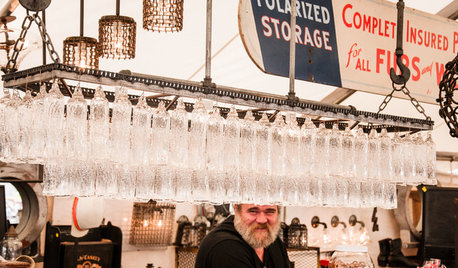
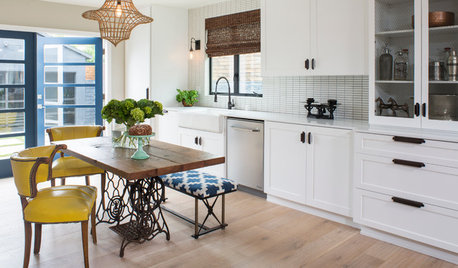

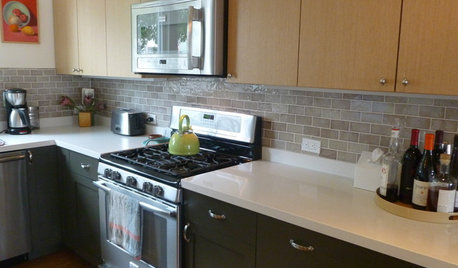
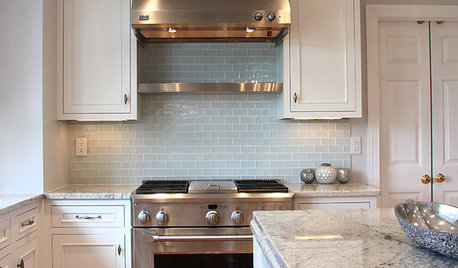
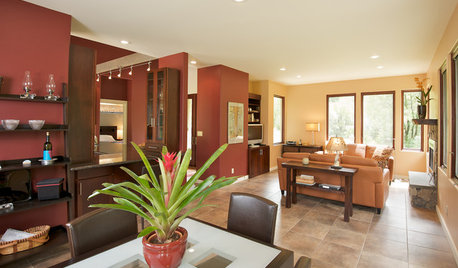

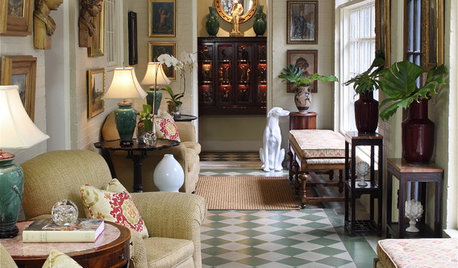

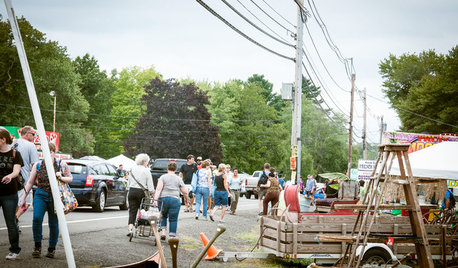






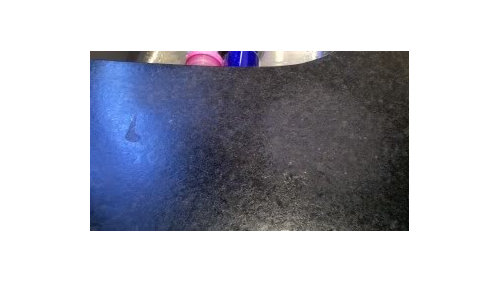
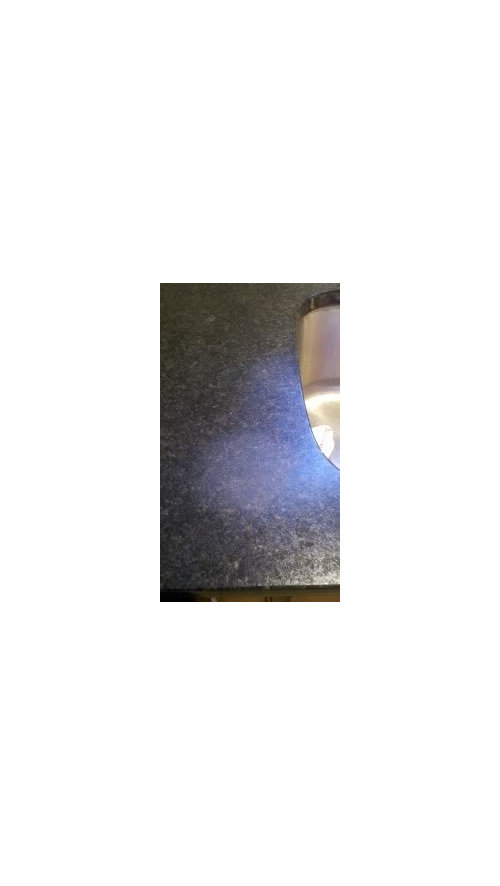

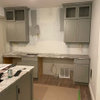
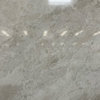
littlesmokie